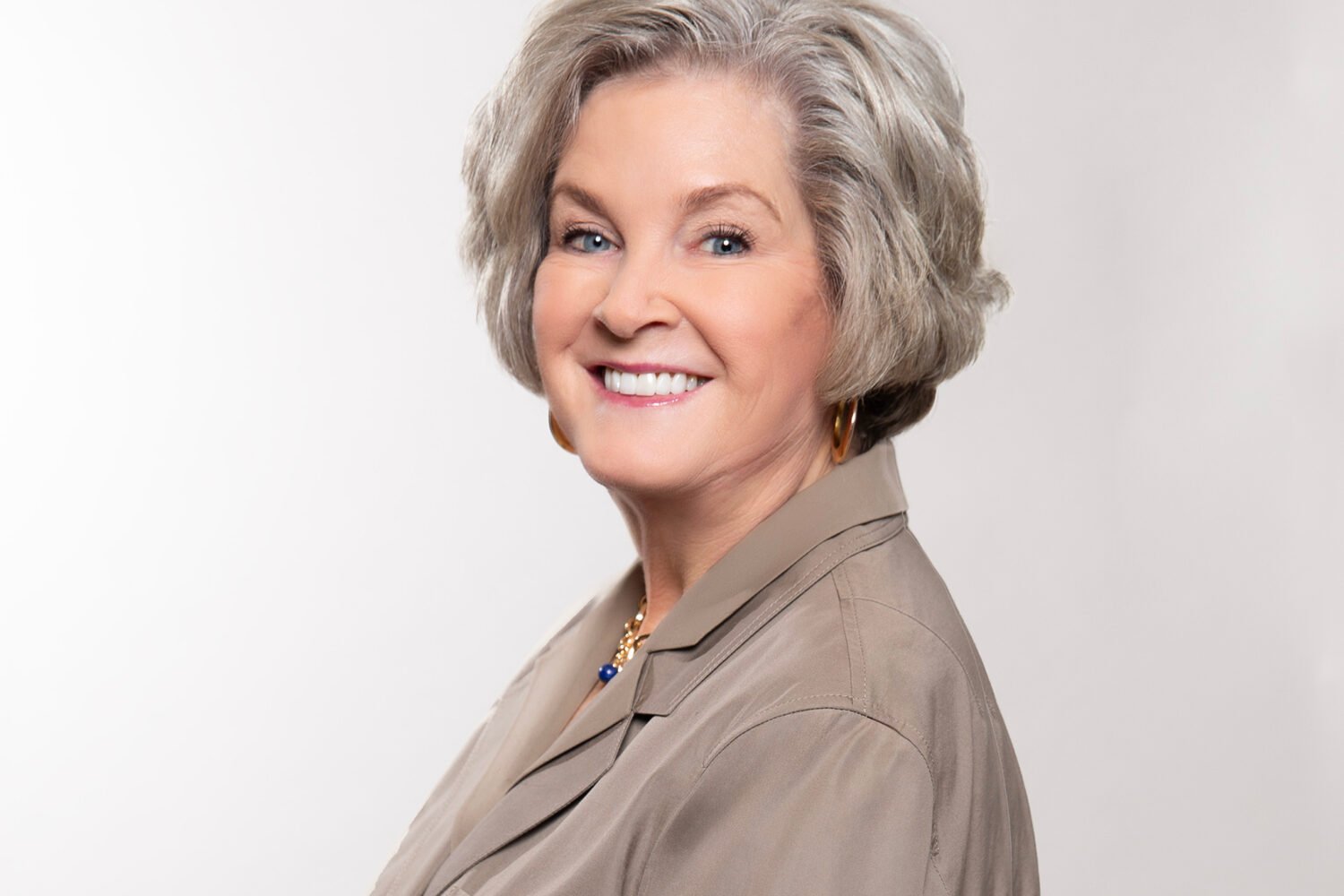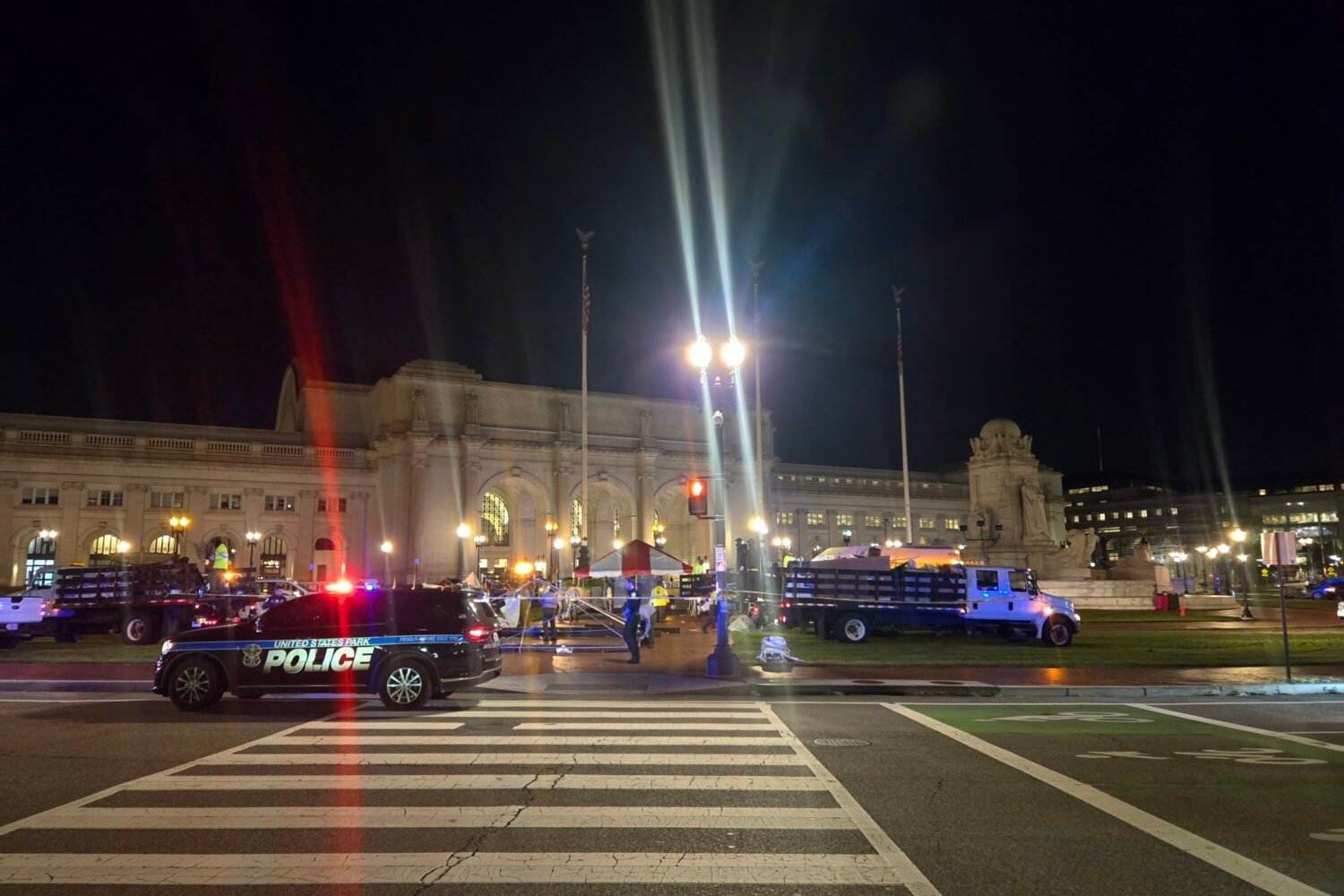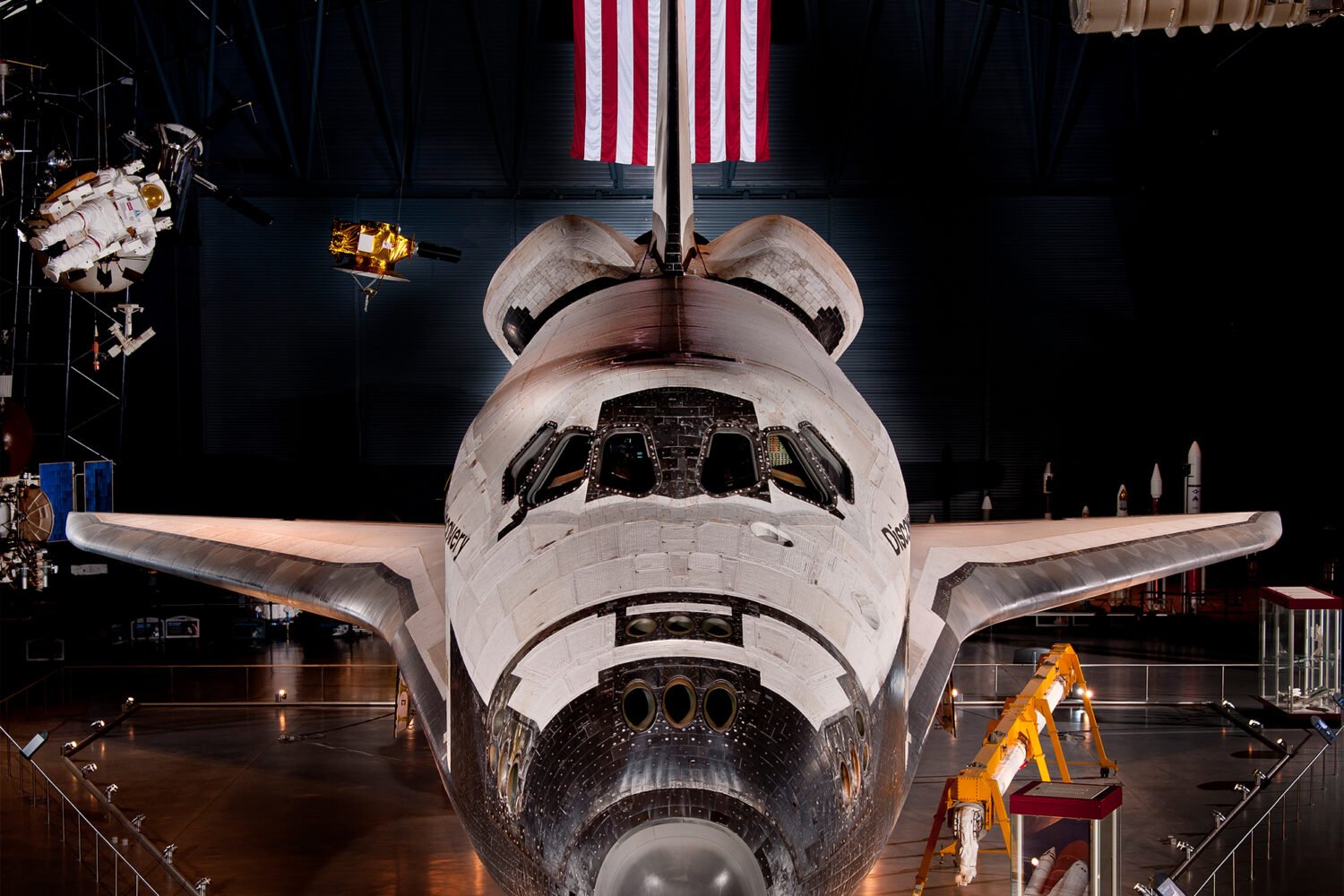
This article initially appeared in the August issue of The Washingtonian. For more on the area's top think-tank leaders, including what they earn, click here.
America has been defined by its great cities and their signature industries. Pittsburgh became the city of steel during the industrial age. During the first half of the 20th century, Detroit became the city of automobiles. Los Angeles led the rise of film and television. More recently, California’s Silicon Valley spearheaded the technology boom, and New York is synonymous with Wall Street.
Washington has always been different. It has never had much of a manufacturing base, and since Georgetown ceased to be an active port in the late 18th century, it hasn’t exported many products. In fact, Washington “makes” very little. Yet there is one industry that Washington can claim as its own: the ideas industry.
Travel down Massachusetts Avenue in Northwest DC and you’ll find yourself in the heart of an industry that was, when it began, unique to the nation’s capital. The imposing facades of the Brookings Institution, the Carnegie Endowment for International Peace, and the Johns Hopkins School of Advanced International Studies bear little resemblance to the old steel mills of Pittsburgh, but they are factories all the same—producing an endless stream of books, policy papers, reports, analyses, and commentary on everything from health care to taxes to defense.
Washington’s “ideas” economy, based in its think tanks and universities, has made the city an intellectual leader. In 2009, the University of Pennsylvania conducted a survey of the world’s think tanks. It identified 6,305 in 169 countries. At the center of this universe was Washington. Some 393 think tanks were located in the District, more than in any other city in the world; DC is home to about one-fifth of all the think tanks in the United States. Another 149 are in Virginia and Maryland. With budgets ranging from a few hundred thousand dollars to $80 million, the ideas industry is a huge driver of the local economy.
And it’s not just a matter of numbers. When the think tanks in the survey were rated for the influence of their work, nine of the top ten in the United States had offices in Washington; the Hoover Institution at Stanford University—staffed with many DC refugees—was the only non-DC think tank to make the top ten.
Results were similar when think tanks were broken down into specialties. All of the world’s top five that work on environmental issues are in DC. Indeed, in almost every area of importance, Washington came out on top, with four of the top five in international economics and international affairs and three of the top five each in health policy and social policy. When it came to ranking the world’s think tanks according to overall influence and respect, the winner was the Brookings Institution, formed in 1916 by the Midwestern industrialist Robert Brookings. Coming in second was its next-door neighbor, the Carnegie Endowment for International Peace. The previous year, Brookings had tied for the top with the Peterson Institute for International Economics, across the street. If Washington is the center of the think-tank universe, the 1700 block of Massachusetts Avenue, just off Dupont Circle, is ground zero.
“It is not surprising that think tanks cluster in Washington,” says Martin Indyk, a former US ambassador to Israel who helped found the Washington Institute for Near East Policy and now is director of foreign policy at Brookings. “It is at their core to deal with policy, for some to study it and others to advise on it.”
With regard to policy, Washington’s think tanks can claim to have created an immense amount of change that has reshaped our nation and the world. Everything from the Marshall Plan to the US Agency for International Development to environmental standards found their origins in think tanks scattered around Washington. For instance, when President Reagan took office in 1981, he quickly gave every member of his cabinet an 1,100-page book from the Heritage Foundation, Mandate for Leadership, that provided an outline for conservative principles he wished to enact. Of its 2,000 recommendations, roughly 60 percent came to fruition—“which is why Mr. Reagan’s tenure was 60 percent successful,” leading conservative William F. Buckley Jr. later quipped. At the other end of the political spectrum, just days after the 2008 election the Center for American Progress—a progressive think tank founded in 2003 partly as a reaction to the success of Heritage—released a massive, 704-page outline of a possible agenda for newly elected Barack Obama. The yearlong effort, which resulted in the book Change for America: A Progressive Blueprint for the 44th President, helped the Obama administration jump-start its agenda as it came to Washington in early 2009, and more than 50 staff members from CAP have since joined the administration.
While the Marshall Plan of 1947—which arose from work at Brookings—is hailed as a masterpiece of policy and diplomacy, many would argue that some of the worst policy decisions also had connections to think tanks. For example, a number of the erroneous claims about how easy a war against Iraq would be came with a think-tank seal of approval; most were cheerleading masquerading as analysis.
Not everyone is a fan of Washington’s think tanks. Hady Amr, director of Brookings’s Doha Center, has studied Arab world views on the topic. He says that the prevailing view in the Middle East was that our think tanks were actually an “activist lobby entity that cooks up schemes that are secretly woven into government plans.” Ralph Peters, a retired Army lieutenant colonel and now a columnist for the New York Post, has a different, but no less critical, view. “Think tanks are simply welfare agencies for intellectuals who can’t survive in the marketplace as well as holding pens for political creatures briefly out of office,” he says, pointing out the thousands of policy papers that come out of the region’s think tanks. “The Sierra Club should be picketing them over all the innocent trees they’ve killed.”
When I worked in the Pentagon, where the time horizon often extended only as far as the next morning’s newspaper, meticulous research-based findings were frequently eschewed in favor of whatever memos emerged from a balky bureaucratic process. By contrast, when I worked at Harvard, I used to joke that the professors would be glad if the newspaper stopped arriving each morning, as reality had the habit of getting in the way of their theories.
Think tanks are like the bicycle chain that links the policy world with the research world, applying academic rigor to contemporary policy problems. In a sense, they’re universities with no students, whose world of study is politics and policy. Think tanks “help set policy agendas and bridge the gap between knowledge and power,” according to James G. McGann, director of the Think Tanks and Civil Societies Program at the University of Pennsylvania, who has spent more than 20 years studying the field.
“At its best, a think tank contributes to a better world,” says Richard Danzig, a former Secretary of the Navy who has served on the boards of the Center for Strategic and Budgetary Assessments, the Rand Corporation, and Public Agenda and is now chairman of the Center for a New American Security. “It does this by sponsoring thought, research, and dialogue. Optimally, it provides support, time, and space to the privileged few who populate it so that they think more deeply, more broadly, and more soundly than the prevailing wisdom.”
Think tanks can approach a tough policy problem without the time pressures government officials face. As Shawn Brimley, a Pentagon strategist who works in the Office of the Secretary of Defense, says, think tanks “help the government overcome the tyranny of the in box by providing good analysis on long-term strategic problems.”
Even when think tanks come to different conclusions, as often happens, they provide policymakers and the public the means to a deeper understanding of issues than would have been possible without their scholarship and analysis. When the situation in Iraq deteriorated between 2004 and 2006, it was think tanks across the political spectrum that pushed the mix of alternative polices——a surge in troop numbers, new counterinsurgency tactics, and a change in pressure on the Iraqi government—that were ultimately adopted.
Ideally, their nongovernmental status gives think-tankers a semblance of academic freedom. As former Pentagon official Phil Carter points out, it affords them “the ability to arrive at intellectually honest conclusions without fear of reprisal.” For this reason, think tanks are often stalking horses for controversial policies that policymakers want to deal with but consider too hot politically. When Obama officials wanted to show progress on allowing gay people to serve openly in the armed forces, they suggested having Rand study the “don’t ask, don’t tell” policy put in place during the Clinton administration.
Think tanks have a quiet power that government either lacks or is unwilling to use: They bring together leaders and experts who should meet but whom government can’t convene publicly. Such “track twos” range from hosting Israeli and Palestinian negotiators to quietly gathering the multiple actors in the health-care debate for an off-the-record meeting.
As much as think tanks thrive because of their nongovernmental status, they’re filled with people who either have been or want to be in government—or both. This “shadow government” function isn’t necessarily a bad thing in our political system, where opposition parties don’t have “shadow ministers” as they do in the United Kingdom and other parliamentary structures. Says Stephen Cohen, a former State Department official and now a Brookings senior fellow: “When I did my time in State policy planning, I realized that no one was learning anything once they got into the government—they relied upon their intellectual capital before they went in for however many years they lasted.”
In this role, think tanks almost serve as a sort of recruiting network and farm team for government. Each year, Washington is restocked with bright young talent from around the world, thousands of whom arrive to work as interns or research assistants at think tanks, getting their feet wet in the policy world. And at this they are remarkably successful. Most governmental departments have a significant percentage of people who have worked at think tanks at some point in their careers. More than 60 percent of the assistant secretaries at the State Department came out of think tanks.
Yet this is also part of the weakness of the field: Some think-tankers can get caught up in the action—politicking, networking, hobnobbing—and forget the research part of the job. Too many use think-tank perches as bully pulpits for delivering opinion cloaked as expertise. Watch CNN or Fox News for a week and this becomes clear. Many of the same “experts” pop up again and again, whether the topic is Pakistan or swine flu. They may seem authoritative, especially compared with the blow-dried hosts, but they’re often keeping that seat from being filled by an actual expert, who truly has studied the issue and would have something insightful or new to say.
The seductive effect of being so close to power, as well as constantly being called by the media for quotes in stories or appearances on talk shows, can lead many in Washington’s think tanks to confuse visibility with utility. The more prominent someone is, the more likely the media are to solicit that person’s opinion. The result is that media appearances can result in real influence, warranted or not. The problem is that if we use the number of media citations as our main measure (which, unfortunately, many government policymakers and think-tank funders do), then Paris Hilton should be among the most powerful and consulted people in the world.
Even worse is that this cross between politicking and media appearances can result in real influence, or at least grease one’s path to power. Sometimes things can get ugly. After Obama won the presidency, a number of left-leaning think tanks feuded in the blogs and the media over who had helped generate the ideas used by his campaign. It was an effort not only to further their institutional prominence—and show donors that their money had been well spent—but also to place their people in government.
In Washington, the most common divide among people and organizations is the partisan one. But think tanks aren’t technically Republican or Democrat, for the simple reason that such labels would change their tax status. Anyone working in think tanks quickly learns the code words “conservative” and “progressive.” On the right are outfits such as the Heritage Foundation, whose Web site describes it as conservative, while on the left are groups such as the Center for American Progress, whose site says its mission is to “engage in the war of ideas with conservatives.”
Partisanship or the lack thereof can be a key determinant of a think tank’s independence and effectiveness. An ideological institution can help set a political party’s agenda, but then it’s wed to party leaders’ decisions rather than being independent. Ironically, partisan think tanks often have easier times when the opposition is in power. When their team wins, the new administration sucks away their top talent, donors are less eager to contribute, and the freedom to comment—and criticize—is curtailed.
In between the partisan divide are such entities as the Council on Foreign Relations, Brookings, and the Center for Strategic and International Studies, which are nonpartisan in more than name only. While they have fellows and staff who lean one way or the other (as is their right as citizens), these organizations don’t push a particular political view. A survey of their staffs probably would show that they tend to tilt slightly right or left overall, but usually in opposition to whichever side is in power. This is simply because more talent tends to be job-hunting from the side that’s out of power.
To judge a think tank solely by where it lies on the political spectrum is to miss the other key differentiators. For instance, the target audience of the think tank can be a huge determinant of everything from its mode of communication to its geographic location.
The Heritage Foundation and the American Enterprise Institute are right-leaning think tanks. Heritage focuses on influencing Congress, so it not only is located near the Capitol—with headquarters on the Senate side and a second, newer location near the House—but also produces shorter publications that frequently target legislative votes. It famously packages its ideas in a format designed to be readable in the time it takes a member of Congress to walk from his or her office to the House or Senate floor.
By contrast, AEI may be just as right-wing in its partisanship—amusingly, it will sometimes try to deny this in angry letters to the editor, an effort hampered not only by its uniformly right-leaning staff and policy positions but also by the fact that its former president described it as “right of center” and extolled its mentorship of the careers of Milton Friedman, Robert Bork, and Jeane Kirkpatrick—but it has targeted the executive branch in its focus, with its staff briefing President George W. Bush as part of the debate over the “surge” in Iraq.
To find another key differentiator among think tanks, follow the money. Only a few of the older ones are lucky enough to have endowments. Funding sources include government, corporate, foundation, and individual donors, each with its own goals in mind. Some donors want to influence votes in Congress or shape public opinion, others want to position themselves or the experts they fund for future government jobs, while others want to push specific areas of research or education. Critical factors are the parameters under which a think tank accepts money and how dependent it is on one donor’s largess. Can it walk away from the money if the goals of the donor and the think tank begin to differ? If not, it has been “captured” by the donor.
Funding can also affect the question of who decides what is to be researched. The individual researcher? The think tank’s leadership? An outside group?
Both Brookings and Rand are large, nonpartisan think tanks that would seem to have much in common. But Brookings is funded by a mix of endowment and donor money, with individual scholars deciding their own major research projects, while Rand is a Federally Funded Research and Development Center—a think tank directly supported by the federal government, as are other centers such as the National Cancer Institute in Frederick, the Center for Naval Analyses in Alexandria, and McLean’s Center for Advanced Aviation System Development—which means that government officials decide its research priorities.
In any industry, the channels of distribution matter greatly, and here, too, is a factor that is greatly shaping Washington’s ideas industry. Fairness and Accuracy in Reporting found that Brookings has consistently been the think tank most frequently cited in newspapers and on TV over the last five years. However, the number of traditional press mentions it needed to hold the top spot has declined from 4,675 to 2,166. It wasn’t that think tanks were doing less work but that there were fewer newspapers, and the ones that remained were covering less news.
As print loses its central importance and new forms of communication emerge, think tanks are wrestling with how to adapt—many are adding blogs, Twitter feeds, and Facebook pages. Tensions recently arose between the libertarian Cato Institute and the Heritage Foundation not because of the split between libertarians and conservatives but because staffers at the two think tanks accused one another of committing the cardinal Facebook faux pas of stalking their institution’s “fan” list.
Whether trying to “friend” someone else’s fans is something think tanks should be doing is a good question, but there are more-serious issues. All Washington think tanks must wrestle not only with how to get their messages out in this new medium but also with whether the medium begins to change the message. Can something of importance in public policy be said in ten-second sound bites or Twitter posts of 140 characters?
Another trend is the simultaneous proliferation and shrinkage of Washington’s think tanks. Most of those that have popped up in the last decade have been smaller and more specialized. Their lower overhead has allowed them to compete rapidly with more-established think tanks. Yet the rise of the single-dimension format coincides with the growth of policy problems that are more multidimensional. The newer think tanks also tend to be shorter-term in their organizational focus, more reliant on the ebb and flow of donor money, and thus potentially less independent and accountable.
This issue of accountability is of even greater importance now that the chief targets of the work of think tanks—government officials—are figuring out how to co-opt it. At one time, think tanks were held at a distance by people in government even in the close confines of Washington. Those policymakers who appreciated their work did so for the very reason that the work was produced outside government channels, while those who disliked think tanks viewed them as the enemy. President Nixon’s tapes revealed that more than a year before Watergate he ordered a break-in at Brookings’s offices, which was foiled by a security guard.
Today think-tankers joke that you haven’t made it until you’ve served on some sort of government “review” or “advisory” panel. During the policy debate over the war in Afghanistan, no fewer than three review groups of think-tankers were formed by government bodies, each given access and status—and thus better chances for op-eds and interviews—but no actual power. Some of the group members seem to have been chosen less for their expertise than because of their prominence—part of a broader transformation of instant Iraq experts into automatic Afghanistan gurus. On Foreign Policy’s Web site, Laura Rozen slyly wrote of General Stanley McChrystal’s efforts to win important hearts and minds: “He has moved to deftly enlist the Washington class of think tankers, armchair warriors, foreign-policy pundits and op-ed writers in the success of his mission—as well as grab up a few people who have made their mark in Afghanistan.” Later, some of those McChrystal had wooed found out his true feelings in that infamous Rolling Stone article, as he and his staff vented more harsh feelings about Washington policymakers.
Rory Stewart, director of the Carr Center for Human Rights Policy and a member of Richard Holbrooke’s special committee for Afghanistan and Pakistan policy (a different advisory group from McChrystal’s), described, in a Financial Times interview, the perils of selecting advisers for reasons other than to get their advice:
“I do a lot of work with policymakers, but how much effect am I having? It’s like they’re coming in and saying to you, ‘I’m going to drive my car off a cliff. Should I or should I not wear a seatbelt?’ And you say, ‘I don’t think you should drive your car off the cliff.’ And they say, ‘No, no, that bit’s already been decided—the question is whether to wear a seatbelt.’ And you say, ‘Well, you might as well wear a seatbelt.’ And then they say, ‘We’ve consulted with policy expert Rory Stewart and he says . . . .’ ”
Washington think tanks are being buffeted by the economy—the financial crisis is shaping both the funding environment for think tanks and the way they respond. With shrinking public and private dollars, many enacted hiring freezes. Unfortunately for Bush-administration refugees, this happened at almost the same time they started to job-hunt, so the revolving door didn’t swing as widely as it had in the past, leaving many staffs more unbalanced than they once were, not for strategic reasons but because of economics.
The shrinking money environment also put motivated donors in a more privileged position and presented think tanks with harder choices about whom to take money from. Last year, lawyers representing private military firms offered to help raise money in the six figures and up for a set of think tanks—if they would conduct a study on private military firms that would be issued to the public. In a time of staff layoffs and budget deficits, some think tanks accepted the money; others took the high road—and suffered the budgetary consequences.
But perhaps the most important trend affecting think tanks is globalization. As corporations and universities have been doing for years, many think tanks are opening up branches abroad. The Carnegie Endowment for International Peace has reached beyond Dupont Circle to open new offices in Beijing, Beirut, Brussels, and Moscow.
The other part of globalization is the rise of indigenous think tanks. China has gone from just a few a decade ago to 428 in 2009, moving it into second place in number of think tanks. The People’s Daily newspaper reported that the Chinese organizations are also growing in influence: “Every time that the government formulates fundamental policies, or seeks to resolve problems in the lives of citizens, these think tanks provide their counsel.”
The rise of so many think tanks around the world raises questions about their future. As James McGann of the University of Pennsylvania explains, “Designed to look like nongovernmental organizations, these are in fact arms of the government. They’ve emerged as a favorite strategy for authoritarian regimes to mask their diktats as a flourishing civil society.” Perhaps the best illustration is that there are now two think tanks in North Korea; it’s hard to argue that they actually provide independent research.
The broader globalization question for think tanks here may be simpler—and more worrisome. Washington may have been the origin and center of think tanks for the last century, but no industry stays the same forever. Indeed, the 2009 Global Think-Tank Summit wasn’t held inside the Beltway—it was in Beijing. Could what happened to America’s manufacturing industry also one day befall Washington’s ideas industry?

















